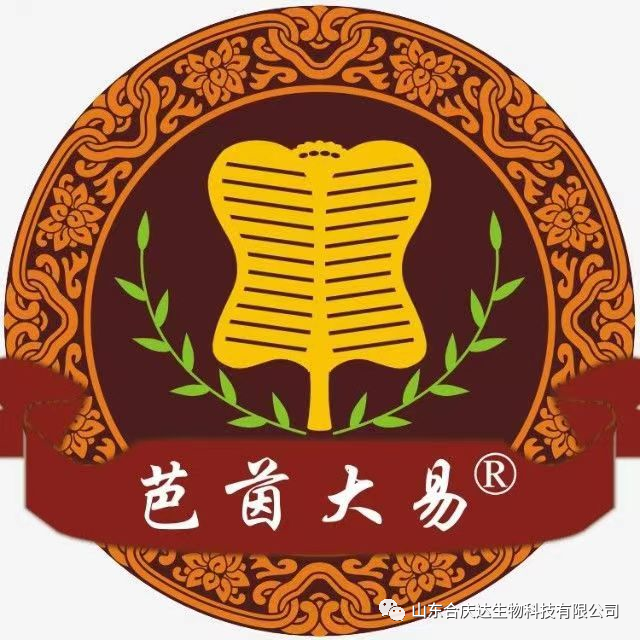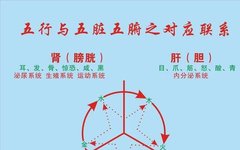The earth has five directions, humans have five elements, and food has five flavors.
The changes in nature can be summarized by the five elements.
The organs, tissues, and emotions of the human body can also apply the theory of the five elements.
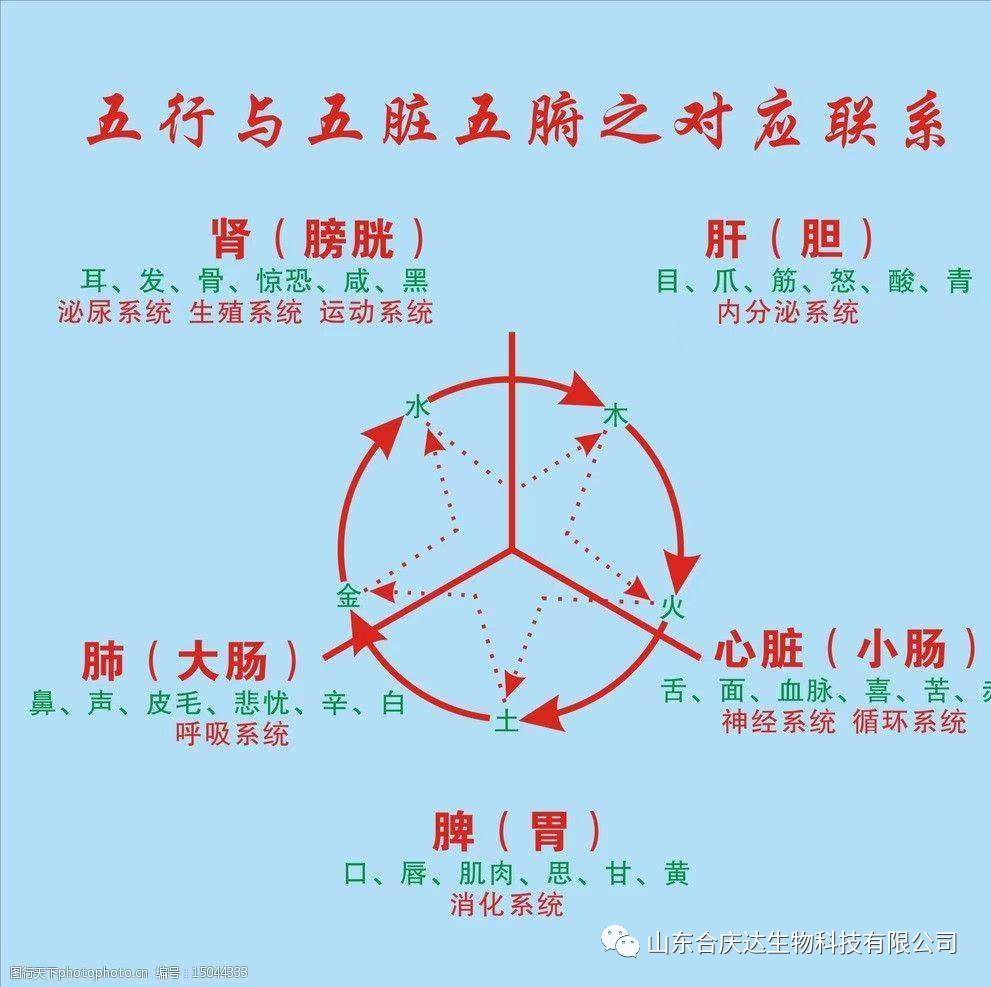
Since the natural world maintains a dynamic balance, the relationships of the five elements cannot exist independently but rather through the interactions of mutual generation and mutual restraint, maintaining a stable equilibrium.
The relationships of the five elements can be roughly divided into four types: mutual generation, mutual restraint, mutual multiplication, and mutual regret.
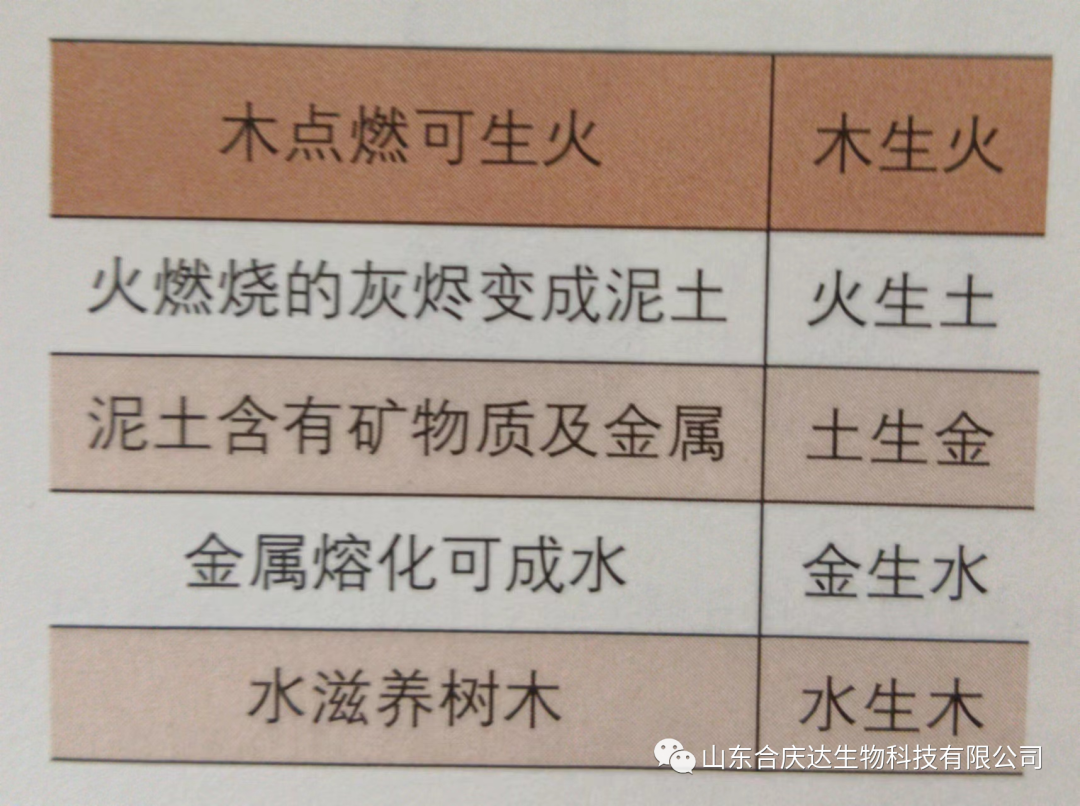
① Mutual Generation
The five elements have a mutual generation “mother-child relationship”; wood can generate fire, where wood acts as the mother and fire as its offspring. This can be understood as: wood generates fire, fire generates earth, wood generates metal, metal generates water, and water generates wood, with mutual generation understood as nurturing.
② Mutual Restraint
The five elements have a relationship of mutual restraint, known as mutual restraint.
Wood restrains earth, earth restrains water, water restrains fire, fire restrains metal, and metal restrains wood. Mutual restraint can be understood as influence.
③ Mutual Multiplication
In the relationship of mutual restraint among the five elements, two situations can lead to a “mutual multiplication” effect, which is excessive restraint. Taking metal restraining wood as an example:
Fire multiplying metal: when fire is too strong, the power of fire restraining metal significantly increases, which is termed mutual multiplication; when metal is too weak, the power of fire restraining metal also increases, which is also termed mutual multiplication.
④ Mutual Regret
Mutual regret: in the relationship of mutual restraint among the five elements, two situations can lead to a mutual regret effect, where “regret” means to deceive or betray.
For example: earth regretting wood:
Originally, wood restrains earth, but when earth is too strong, the power of wood is relatively insufficient, leading earth to betray wood; this is termed mutual regret. When wood is weak, the power of earth is relatively insufficient, leading earth to betray wood, which is also termed mutual regret.
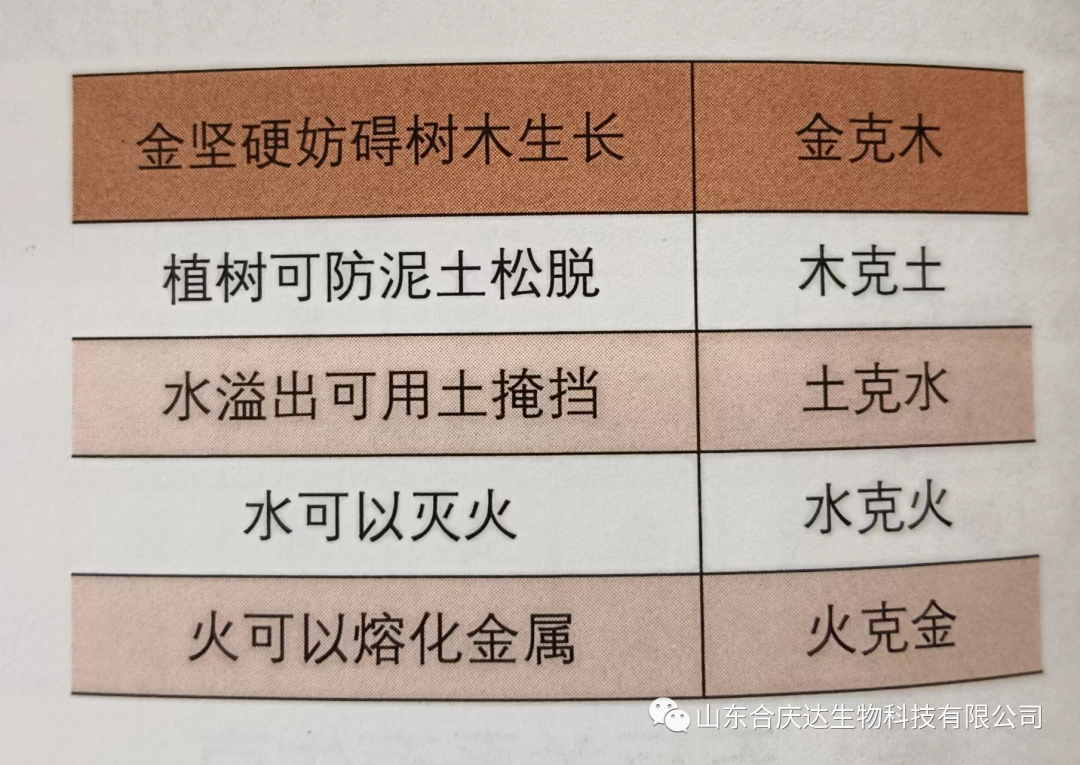
Ancient famous doctors utilized the method of mutual restraint of the five elements to treat diseases.
The five elements are related to the human body:
The five organs and six bowels of the human body have characteristics very similar to the five elements, and the functions of the five organs and six bowels can be explained according to the attributes of the five elements.
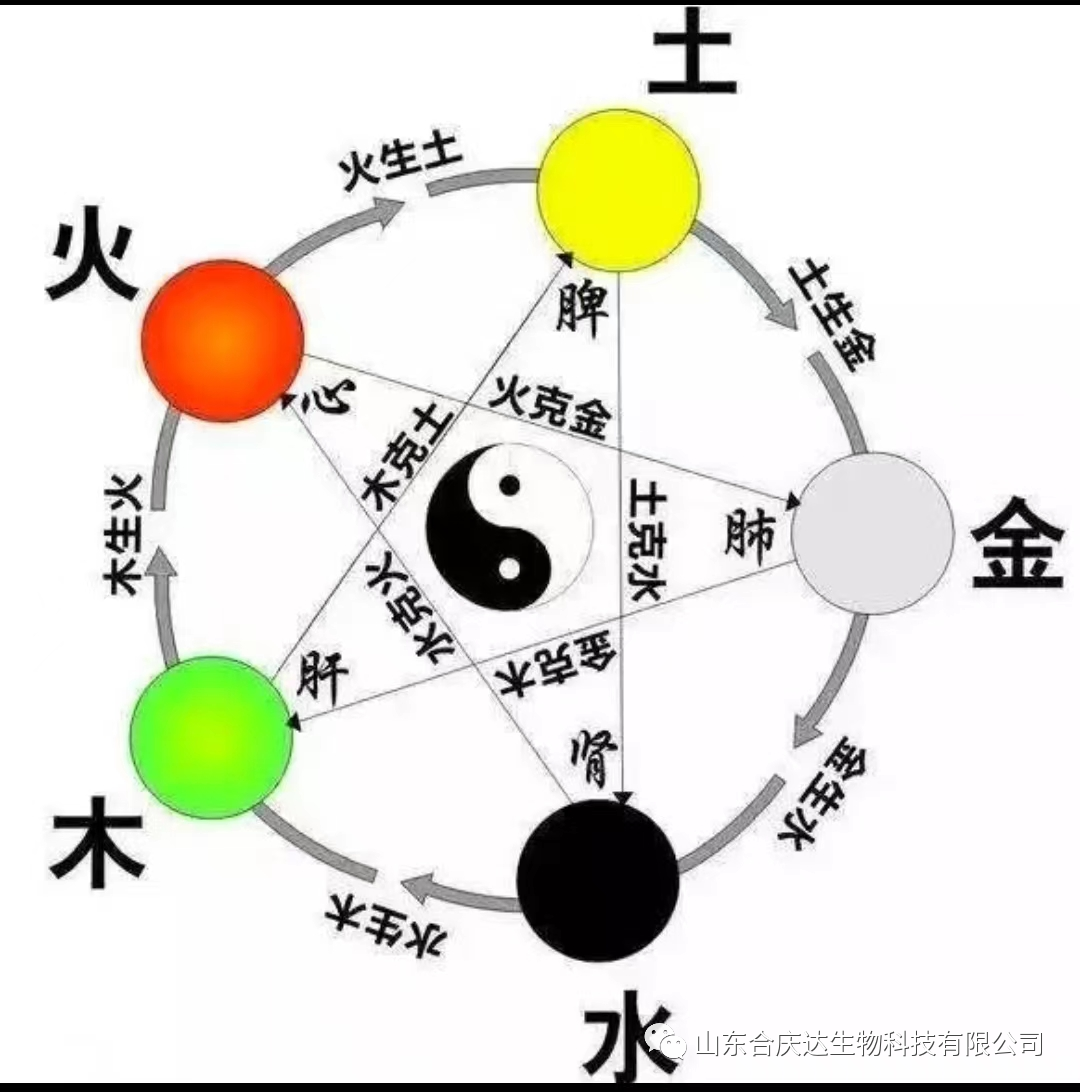
Mutual generation relationship (nurturing)
Mutual restraint relationship (influence)
Wood corresponds to the liver, fire corresponds to the heart, earth corresponds to the spleen, metal corresponds to the lungs,water corresponds to the kidneys.
Liver: governs the smooth flow of qi and blood, and regulates the flow of qi.
Heart: governs the blood vessels, promoting the flow of qi and blood, and warming the body.
Spleen: governs transformation and transportation, processing food and fluids, producing blood, and supporting immunity.
Lungs: govern respiration, material transformation, and the settling of qi.
Kidneys: govern water, regulating fluid metabolism.
The five elements, through these connections and constraints, form a unified whole, collectively maintaining the dynamic balance within the human body.
Wood generates fire – liver generates heart; when the liver’s blood storage function is normal, it helps the heart’s function of governing blood vessels to operate normally.
Fire generates earth – heart generates spleen; when the heart’s function of governing blood vessels is normal, blood can nourish the spleen, allowing the spleen to perform its functions of transformation, blood elevation, and blood storage.
Earth generates metal: spleen generates lungs; the spleen can transform qi and blood, transporting essences to the lungs, promoting the lung’s function of governing qi, ensuring the lung’s dispersing and descending functions are normal.
Metal generates water – lungs generate kidneys; the lung’s qi descends, assisting the kidneys in storing essence, receiving qi, and governing water.
Water generates wood – kidneys generate liver; kidney essence can transform into liver blood, facilitating the normal function of the liver.
Water restrains fire – kidneys restrain heart; kidney water can prevent excessive heart fire.
Fire restrains metal – heart restrains lungs; the yang heat of heart fire can prevent excessive lung qi clearing.
Metal restrains wood – lungs restrain liver; lung qi clearing can prevent excessive liver yang rising.
Earth restrains water – spleen restrains kidneys; the transformation of spleen earth can prevent kidney water from overflowing.
Wood restrains earth – liver restrains spleen; liver qi regulation can relieve the stagnation of spleen earth.
According to seasonal changes, adjusting the balance of the five organs is essential to maintain health.
In TCM, health preservation is not about treating the area that hurts or feels uncomfortable, but rather analyzing through the theory of the five elements.
Although symptoms may appear similar in different individuals, the underlying conditions can be quite different.
First, maternal disease affecting offspring
In the human body, “maternal disease affecting offspring” can also be an abnormality in one of the five elements, leading to abnormalities in both the mother and child elements.
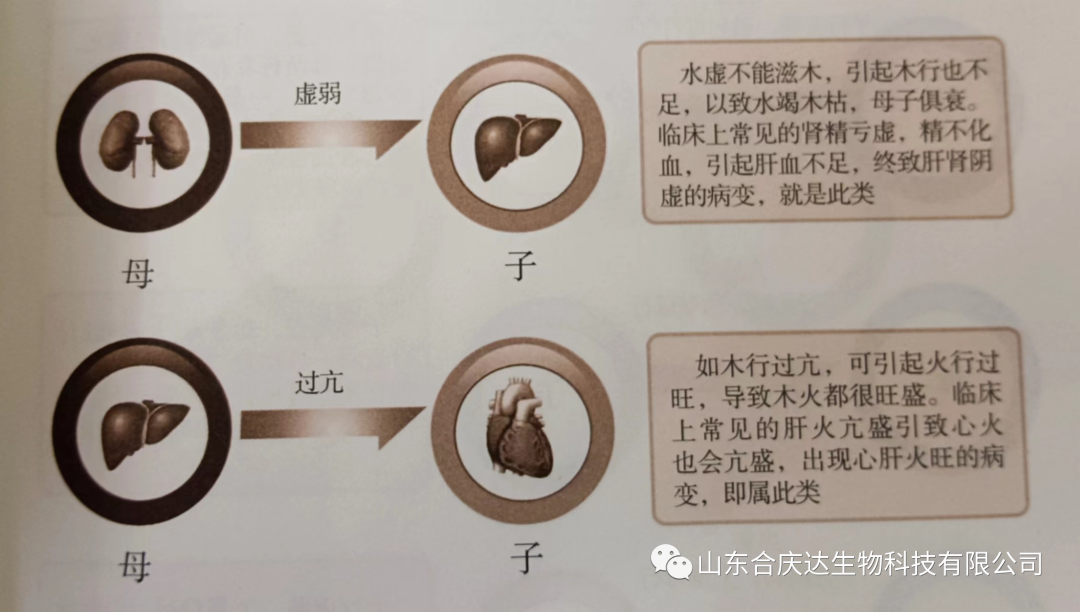
1. Maternal element weakness affects the offspring element, leading to weakness in both mother and child elements, known as “the mother can cause the child to be weak.”
2. Maternal element excess leads to the offspring element also being excessive, resulting in both mother and child elements being excessive.
Second, offspring disease affecting the mother
This is also an abnormality in one of the five elements, affecting its maternal element, leading to abnormal changes in both the child and mother elements.
1. Offspring element excess leads to the maternal element also being excessive, resulting in both child and mother elements being excessive, known as the offspring can cause the mother to be full, generally termed as offspring disease affecting the mother.
2. Offspring element excess seizes the maternal element, leading to maternal element weakness, termed as “offspring stealing maternal qi.”
3. Offspring element weakness affects the maternal element, leading to maternal element insufficiency, historically referred to as “offspring do not nourish the mother.”
The relationship between maternal disease affecting offspring and offspring disease affecting the mother is significant; any element in the five elements that is excessively strong can lead to its offspring element also being excessively strong.
Any element in the five elements that is excessively weak can affect both its offspring element and its maternal element, potentially leading to both mother and child elements being weak.
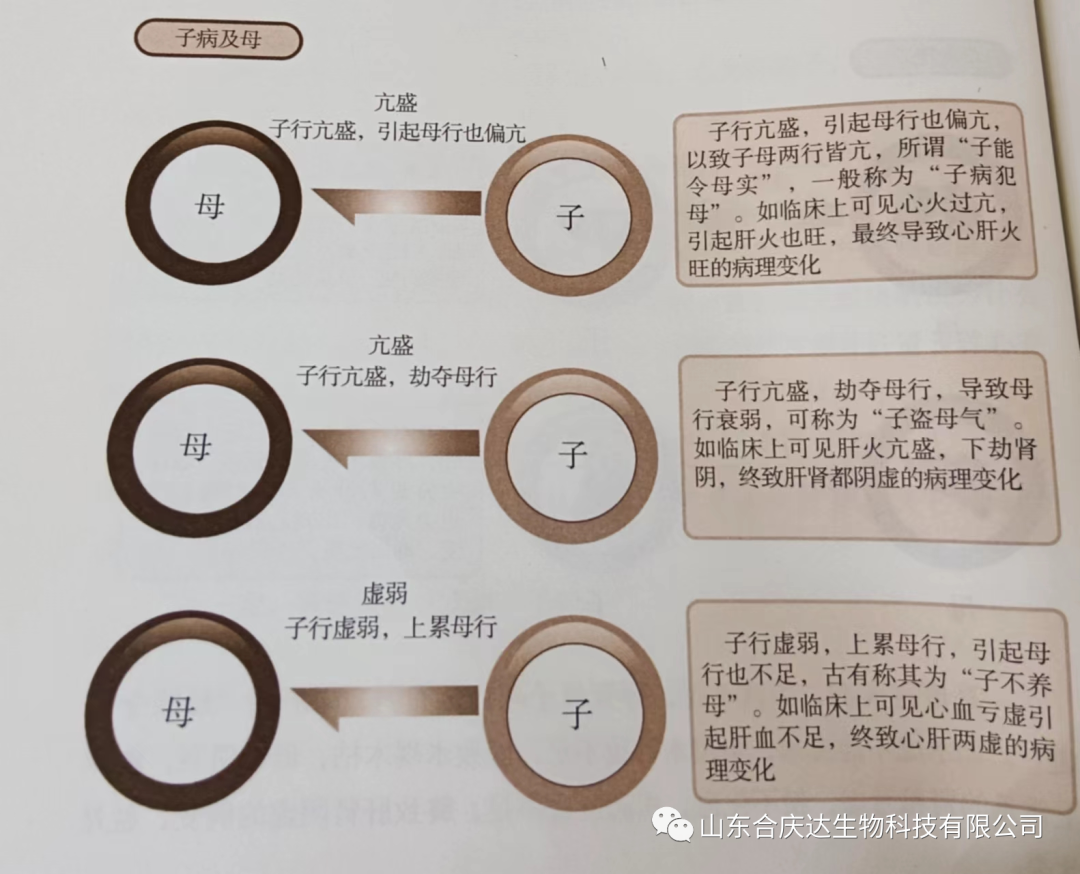
Maternal disease affecting offspring indicates a more severe condition;
Offspring disease affecting the mother indicates a more severe condition;
Mutual multiplication transmission indicates a more severe condition;
Mutual regret transmission indicates a milder condition.
Health preservation is not about doing what others do, but rather adjusting according to one’s own situation.
Ba Yin Da Yi Health Preservation:
Inheriting ancient teachings, promoting national essence, imparting craftsmanship, and conveying mission.
Upholding the teachings of the Chen family Tai Yi school, using a century-old secret to benefit the lives of the masses.
